If you have recently read our articles about the Rinjani volcano or the north of Bali, you will certainly have noticed that volcanoes in Indonesia are numerous and rather nice to visit. In fact, we had not yet had our dose of volcanoes! So, we decided to go to the island of Java and climb on the Ijen and specifically on the Kawah Ijen with its acidic lake! Come on, you will take a little shot of volcanoes 😉?
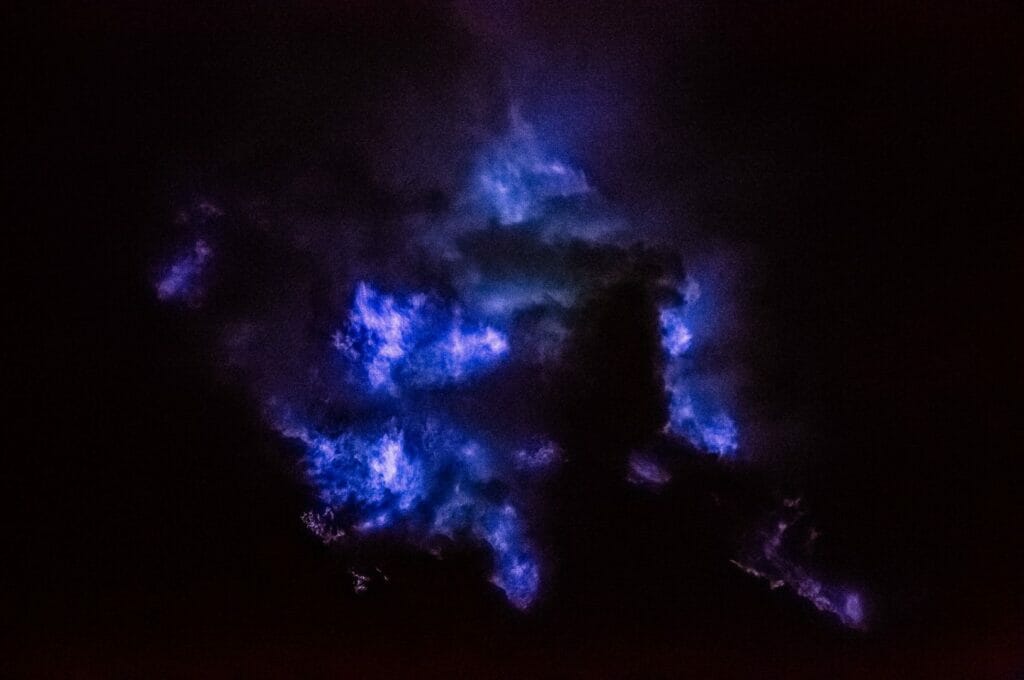
- Presentation of Kawah Ijen
- Climbing Kawah Ijen without a guide
- Kawah Ijen trekking with an organized tour
- How to get to the gates of Kawah Ijen?
- Equipment for the ascent of Kawah Ijen
- Discover the Ijen with an old sulfur miner
- The trek on the Kawah Ijen
- Sulfur miners in Kawah Ijen
- Our review of the trek on the Kawah Ijen
We took this trip in 2014, but the article was completely revised and updated in April 2023. If you see any price changes or have additional information that might be relevant, please feel free to leave us a comment!
Presentation of Kawah Ijen
The Ijen volcano and Kawah Ijen
So, to situate you a little, Ijen is an explosive volcano, still active, which culminates at 2803 meters above sea level in East Java. In fact, the Ijen volcano refers to the huge caldera, the Kendeng caldera, which includes several craters and volcanic cones in the middle of a nature reserve. The largest crater is Kawah Ijen which culminates at 2380 meters above sea level, near Gunung Merapi, the highest cone of the volcano. Its last eruption was in 2002.
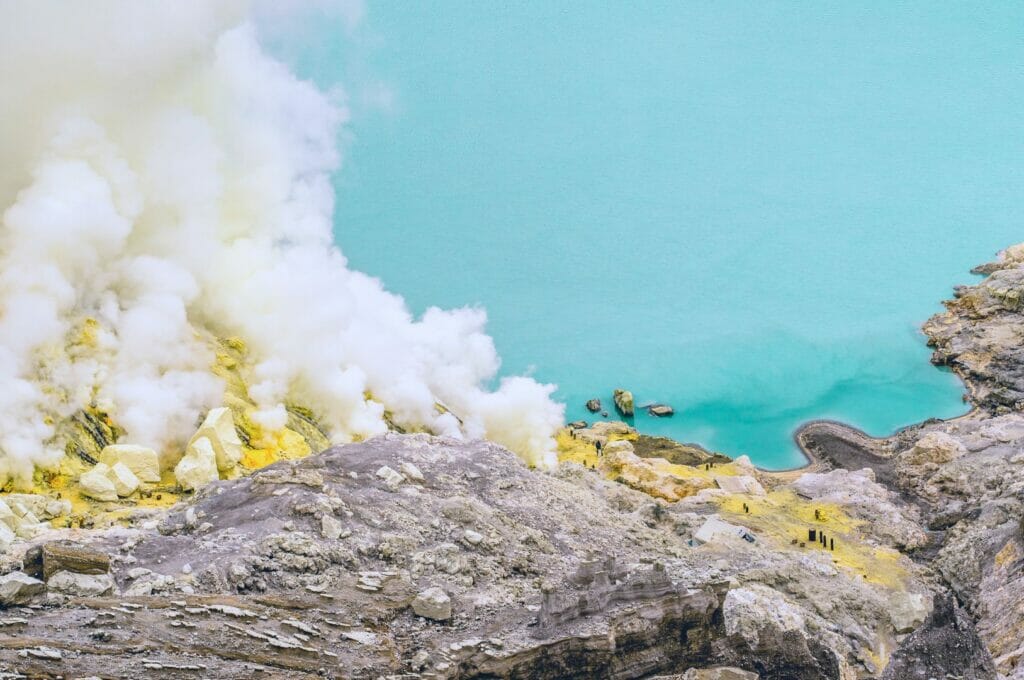
Kawah Ijen is unique because it contains the largest acid lake in the world! 200 meters deep and 1 kilometer long, it stands out with its turquoise color but with a pH of 0.2, no way to dip even a toe!
The other characteristic of Kawah Ijen is its solfatara where sulfur is deposited in large quantities. This is where courageous miners work like slave laborers. Every day, they bring tens of kilos of sulfur from the crater to the foot of the volcano. At the end of the article, we return to these sulfur miners and this darker side of Ijen.
The blue fire of Ijen
We can’t talk about the Kawah Ijen without its blue fire! Wait a minute… Blue flames? What is that?
In fact, volcanic gas loaded with sulfur dioxide and hydrogen sulfide escapes from the crater at high temperatures and ignites on contact with the air. Some of the gas condenses into liquid sulfur, which continues to burn as it sinks to the bottom of the crater before crystallizing. And as the color of the flames is blue, one has the impression of observing blue lava flows. These flames are visible only at night and can reach several meters high! It is a really unique and impressive spectacle as this video, filmed by our guide with our camera (sorry for the quality of the image!), shows.
To see the blue fire of Kawah Ijen and a magnificent sunrise from the crater crest, you have several options depending on the time you have and your budget: in autonomy or by a tour.
Climbing Kawah Ijen without a guide
Rest assured, it is quite possible to climb Kawah Ijen without a guide. This is a change from Mount Batur and its mafia of guides! Organizing everything on your own is clearly the cheapest solution! In addition to saving money (the price is divided by 3 compared to a tour), you can enjoy the panorama around the turquoise lake of Kawah Ijen after sunrise without time constraints.
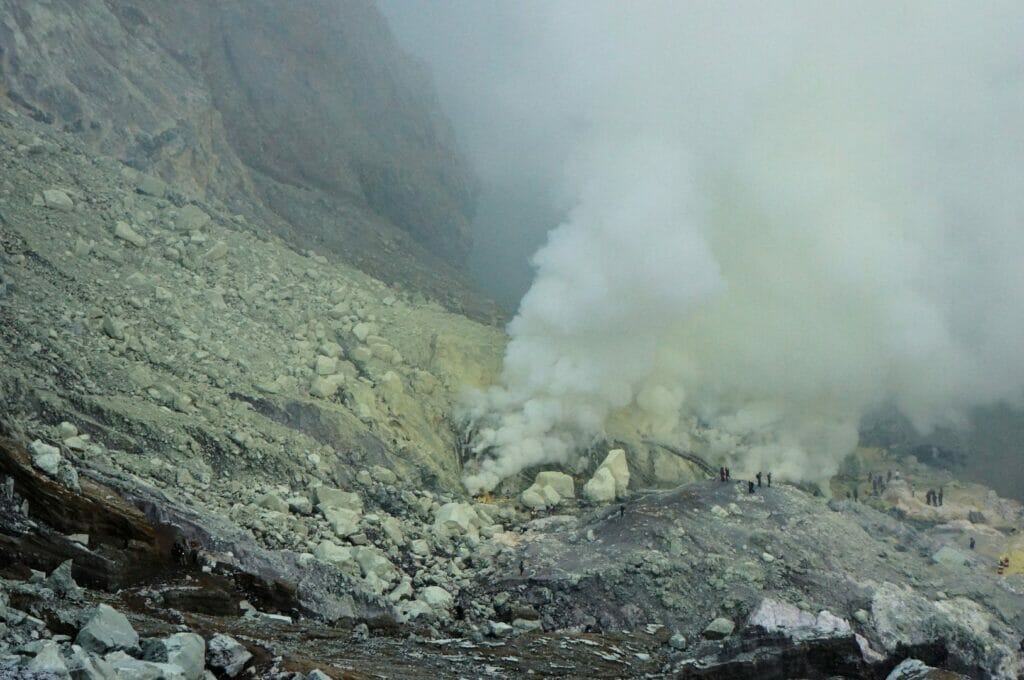
Hotel: Banyuwangi or Licin?
First of all, you must go to the island of Java, to Banyuwangi, or the region of Licin, at the foot of the volcano. We explain to you how to go there a little bit below. Staying around Licin, you will have the advantage of being only 30 minutes away from the beginning of the trek! In Banyuwangi, it takes more than 1 hour… Anyway, who would say no to some extra sleep 😉?
In Licin, there are accommodations for all prices… As we loved being immersed in a family of former sulfur miners, we can only recommend this experience. At the Ijen Miner Family Homestay, Ali’s entire family will welcome you to make your stay memorable and for a great value (140 000 rupiahs per night). If you’re looking for a little more privacy and a breathtaking view of Kawah Ijen, then Bamboo & B‘s bungalows will charm you.
Alternatively, sleeping at Banyuwangi may be an option if you want to make the climb during the day and take the train to the west.
This article contains affiliate links to partner sites. When you use our links to book accommodation, a car, or an activity, you don’t pay anything extra, but we get a small commission. This helps us to offer you free, independent, and ad-free content. Thank you for your support!
How to get to Kawah Ijen?
There are 2 possibilities to reach the base camp of the Ijen volcano. You can rent a powerful motorbike (150cc) in Banyuwangi to spend the night in Licin and thus swallow the 30 minutes of road that separate you from the beginning of the trek. The Ijen Nation agency is a reference in Banyuwangi for the rental of two-wheelers, which count about 100 000 rupiahs per day. The other solution is to take a taxi to your hotel in Licin, and then have a Jeep drive you to the camp. Many hotels offer this option!
How much is the entrance to Ijen?
To climb the Ijen volcano without a guide, you will have to go through a toll gate and pay 10 000 rupiahs down the road to the base camp. The entrance ticket costs 100 000 rupiahs, to be paid at the office just after the large gate marking the start of the hike. The site is open from 2 a.m. until noon. We advise you to start the climb at 2 a.m. sharp to enjoy the blue fire without the crowd. Be careful though, depending on the volcanic activity, the park may open later and access to the crater may be strictly forbidden! Ask your hotel for the latest news.
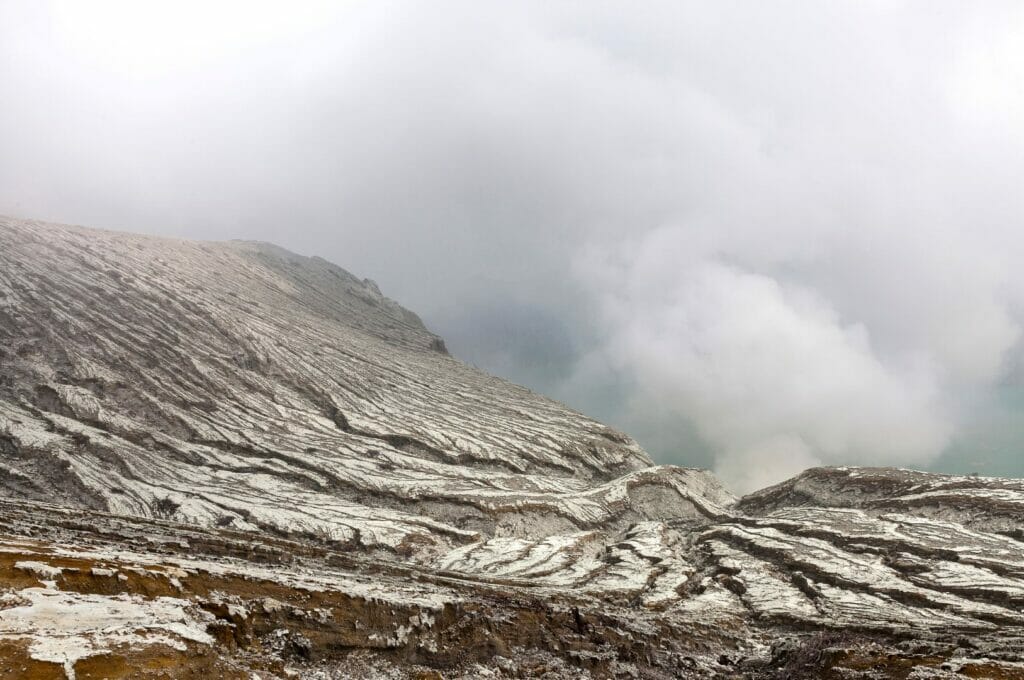
Kawah Ijen trekking with an organized tour
While we were still preparing for our trip to Indonesia, we came across an article where travelers had stayed with a former sulfur carrier and discovered the volcano with him. Their experience was very authentic and we decided to do the same (and even more since we will also discover Mount Bromo with this porter)!
So we left at that time with Mr. Paing and Chunk. Today, they have two different agencies that we can only advise you about:
- Ijen Miner Tour: this is the experience we had, in total immersion in the Javanese life. For the 2 days tour in Ijen with a night in a local house, the price is 1.175 million rupiahs. In addition, we had booked with Mr. Paing the ascent of Kawah Ijen, combined with a trek on Mount Bromo (3 days/2 nights). This formula costs 3.55 million rupiahs. It’s a cost but it’s still cheaper than anything you’ll find on Getyourguide or any other activity platform! We strongly recommend them to you to get off the beaten track and live a human and authentic experience!
- Ijen Twin: here too, your guide will know everything about the life of the miners and will show you all the secrets of the region. This agency offers the same tours (2 days for Ijen and 3 days/2 nights for Ijen and Mount Bromo). The prices are the same as Ijen Miner Tour, but the nights are in hotels. If you prefer to be a little quieter at night but still learn a lot about Javanese life, this might be a good compromise!
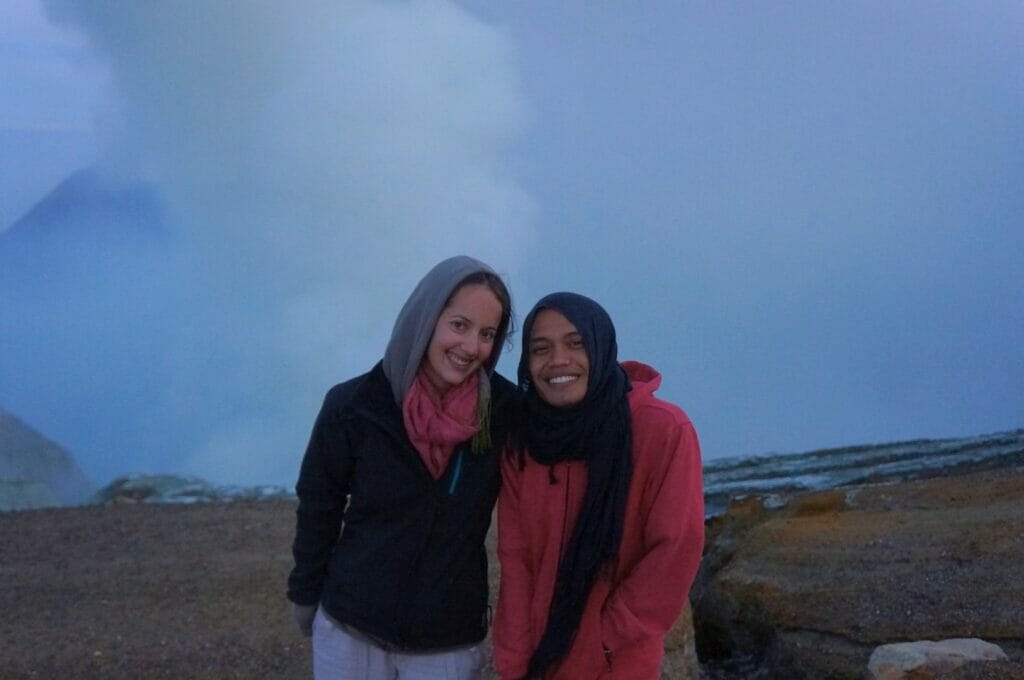
How to get to the gates of Kawah Ijen?
If you plan to do the Ijen trek on your own (or simply to go to the area), we give you all the information about the transportation to get to Banyuwangi or Licin.
If you already are in Java
By plane or by train
As the island of Java is more than 1000 km wide, it is well served in terms of transportation between plane and train.
By plane, crossing Java, from Jakarta to Banyuwangi for example, takes 1 hour and 40 minutes for a ticket starting at 700 000 rupiahs.
Along with Sumatra, Java is one of the only islands with a railway network in Indonesia. To find all the routes and book your tickets, go on Tiket or to the terminals of Indomaret supermarkets. To give you an idea, crossing Java from East to West by train costs more or less 400 000 rupiahs (depending on the class) by doing 2 trips: Jakarta-Surabaya and Surabaya-Banyuwangi. Another example: a trip between Yogyakarta and Banyuwangi takes about 10h30 and the ticket price is 520 000 rupiahs for the equivalent of the first class.
For more information on train travel in Indonesia, we invite you to visit Seat61, one of the reference websites on train travel!
As in Bali and Lombok, beware of taxis on the island of Java! Once you arrive in Banyuwangi, you can use Grab, Blue Bird, or rent a scooter to get to the Licin area. We recommend you rent a motorbike at Ijen Nation to be able to go as far as you want in Licin and Banyuwangi area.
From Mount Bromo
If you come from Mount Bromo, the most convenient option is to go by minivan to Probolinggo station to take the train to Banyuwangi and move around the area with the options mentioned above. The journey takes 3 hours and costs 230 000 rupiahs.
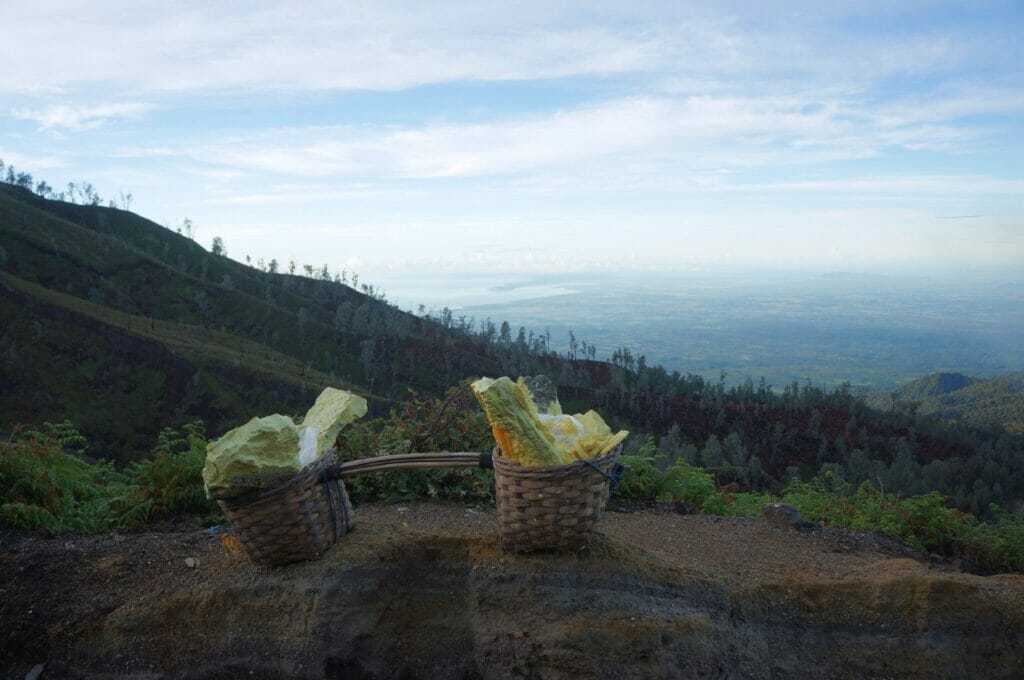
If you are in Indonesia
If you are already in Indonesia, you have 2 possibilities to get to Banyuwangi: by plane or by boat.
By plane
Domestic flights from Bali or Lombok to East Java are numerous. The tickets cost 1 million rupiah maximum for a 1 hour 45 minutes trip from Lombok and 40 minutes from Bali. From the island of Sumatra, you will have to make a stopover in Jakarta, there is no direct flight. Prices are around 2 million rupiahs.
From Bali by boat
From Ubud, on the island of Bali, the ideal is to go to the port of Gilimanuk to arrive at the port of Ketapang, on the island of Java. Only, there is no direct transport from Ubud, except private transport which is not given (1 million rupiahs). You will have to make 2 trips: between Ubud and Denpasar (1 h), then between Denpasar and Gilimanuk (4 h).
Take a taxi or a shuttle from Ubud to Denpasar, then a bus to Gilimanuk (50 000 rupiahs per person, beware of scams!). The port is about 100 meters from the bus station in Gilimanuk and there you can take the ferry to the port of Ketapang. The fare is 6500 rupiahs per person for a 1-hour trip. Once you arrive, take a driver (Grab) to Banyuwangi to rent a scooter at Ijen Nation to the Licin area.
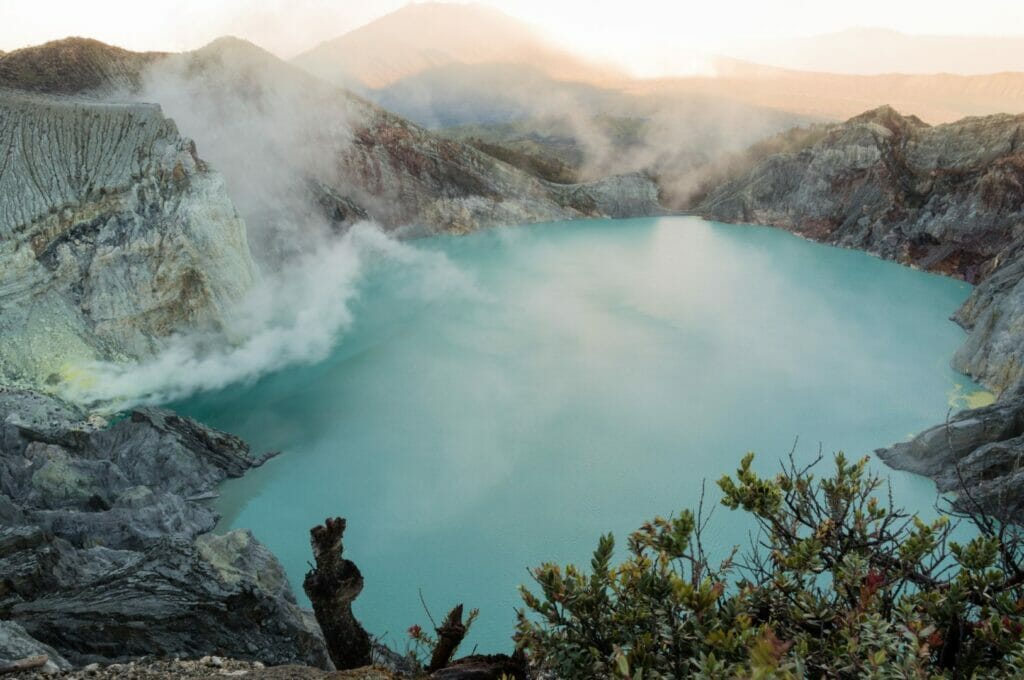
Equipment for the ascent of Kawah Ijen
As for the other treks in Indonesia, take good hiking boots, warm clothes, and a windbreaker. It is very cold at altitude, even more so at night. If you have trekking poles, take them, they can help you in the more difficult passages.
The gas mask is essential for the trek on Kawah Ijen, especially if you want to go down into the crater. If you hike without a guide, you can rent it either at your hotel or at the beginning of the trek for about 10 000 rupiahs. It is usually provided in the tours, but check carefully!
Remember to take something to drink and snack on. Even if there are a lot of cafes/restos at the beginning of the trek, you will be happy to have a small snack facing the sunrise.
Finally, to go on the assault of Ijen in the night, do not forget a headlamp 😉.
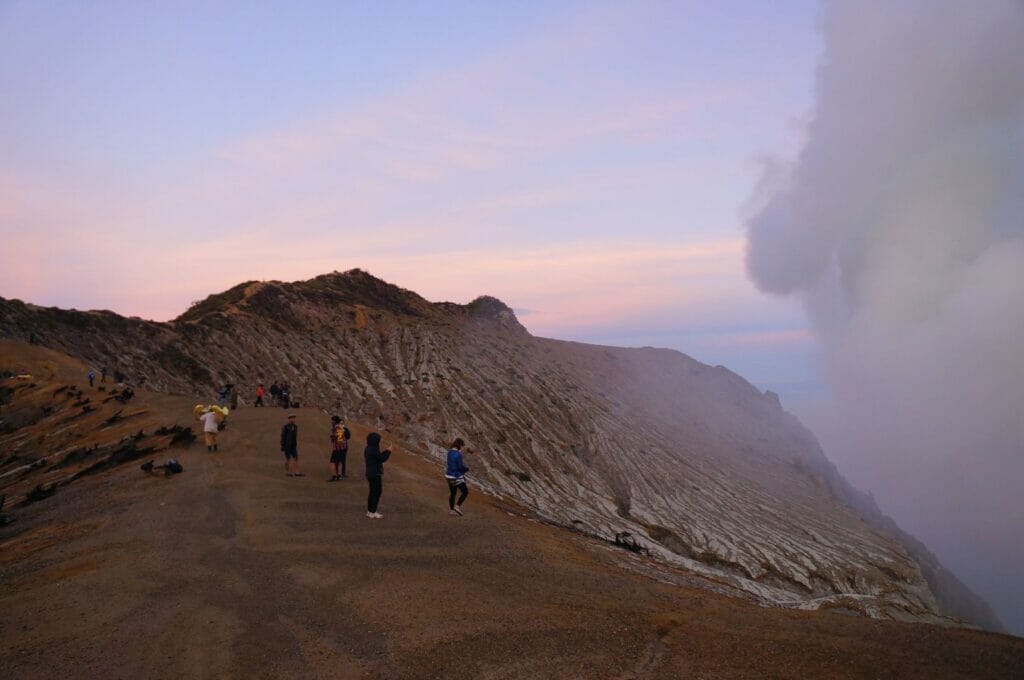
Discover the Ijen with an old sulfur miner
Welcome at the port of Banyuwangi by our guide
Barely arrived at the port of Banyuwangi, in the east of the island of Java, we were welcomed by Mr. Paing, a former miner converted into a guide, and his brother Chunk. We did not understand well if they were really brothers because they all call each other “my brother”, or “my sister”, but it is not very important.
We ride on their scooters with all our equipment and we set out in the direction of the village of Mr. Paing. Well, in the meantime, we stop to let pass a torrential storm, history not to soak all our stuff! That will have allowed us at least to make more ample knowledge with our two guides.
Arrived at the village, we take our quarters in the house of Mr. Paing. It’s very simple, we can see that these people are not rolling in it! But it is good, we are more in search of simplicity and authenticity than of comfort.
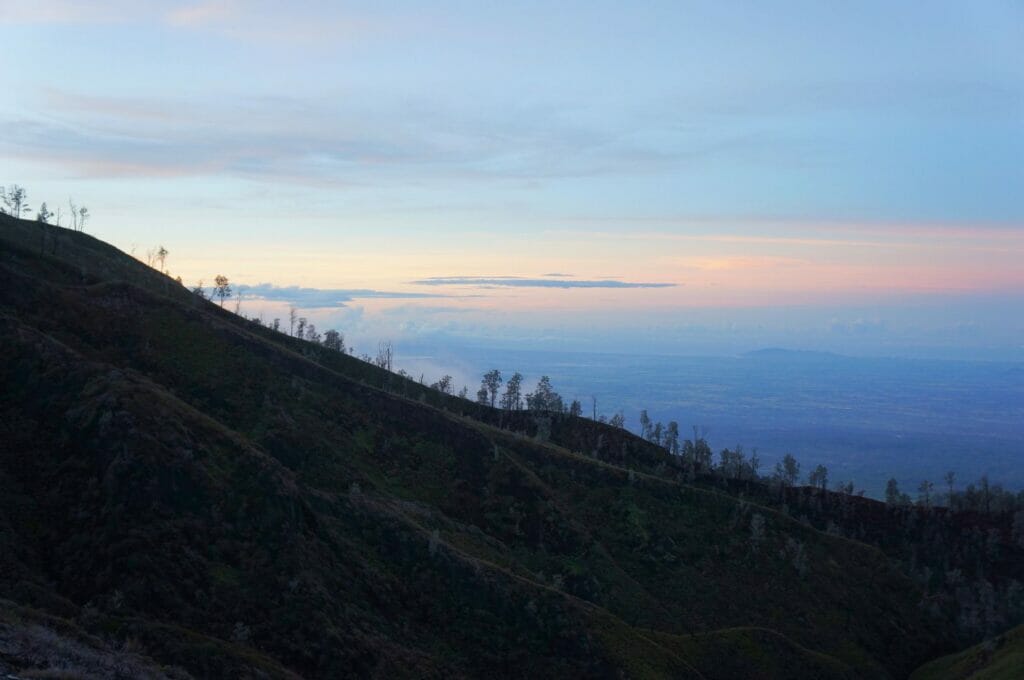
Meeting with the Javanese family of our guide
We also meet Mr. Ganda, the engineer cousin of Mr. Paing and webmaster of their website, who is in charge of finding customers, but also the wife and the two daughters of Mr. Paing. We take a lot of pleasure in discussing with them and getting to know them.
It turns out that they love music! Moreover, because of the passage of the French-speaking travelers or not, Chunk became a fan of Shakaponk while Mr. Paing was rather directed towards Bob Marley. Funny, isn’t it? Otherwise, as the storm rumbles more and more, we spend the end of the afternoon observing the children of the village playing in the rain. Interesting because here, it seems that the rain rather pushes the children to go out while at home, it is rather the opposite!
When the rain finally stops falling, we take advantage of the lull to leave for the rice fields which surround the village with Chunk. Despite the rather covered sky, impossible to spoil such landscapes. We take a lot of eyes!
Visit the region of Kawah Ijen
The next day, our three friends (Mr. Ganda also joined us) took us to discover the region. Indeed, there is not only Kawah Ijen to see in East Java! The beautiful Jagir and Kalibendo waterfalls (5000 rupiah each), rice fields, coffee and fruit plantations… In short, it would be a shame to limit ourselves to the volcano!
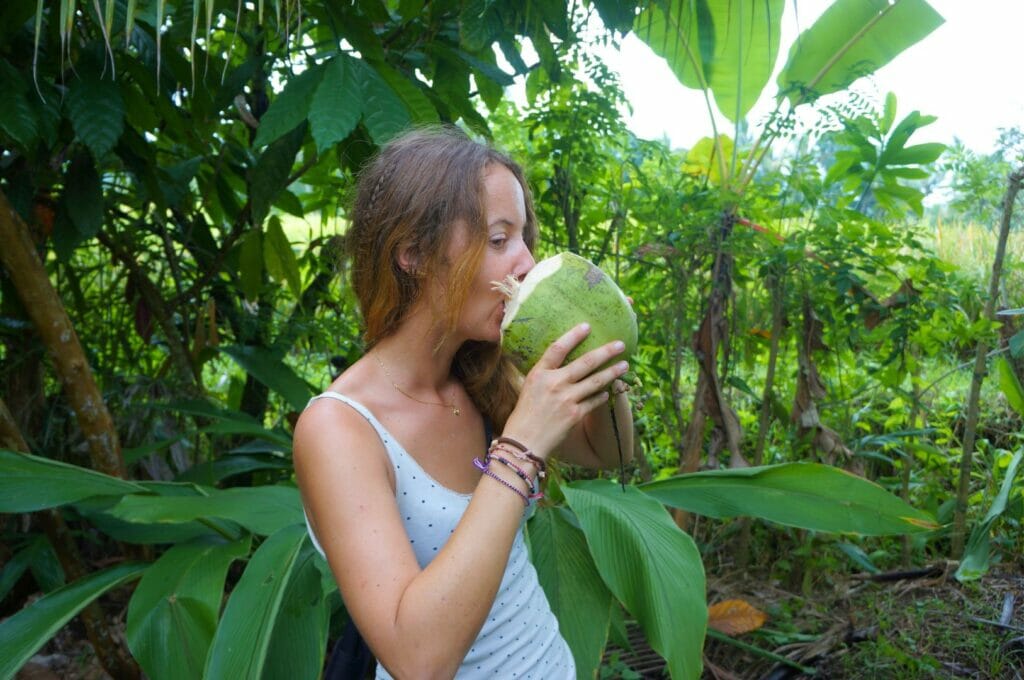
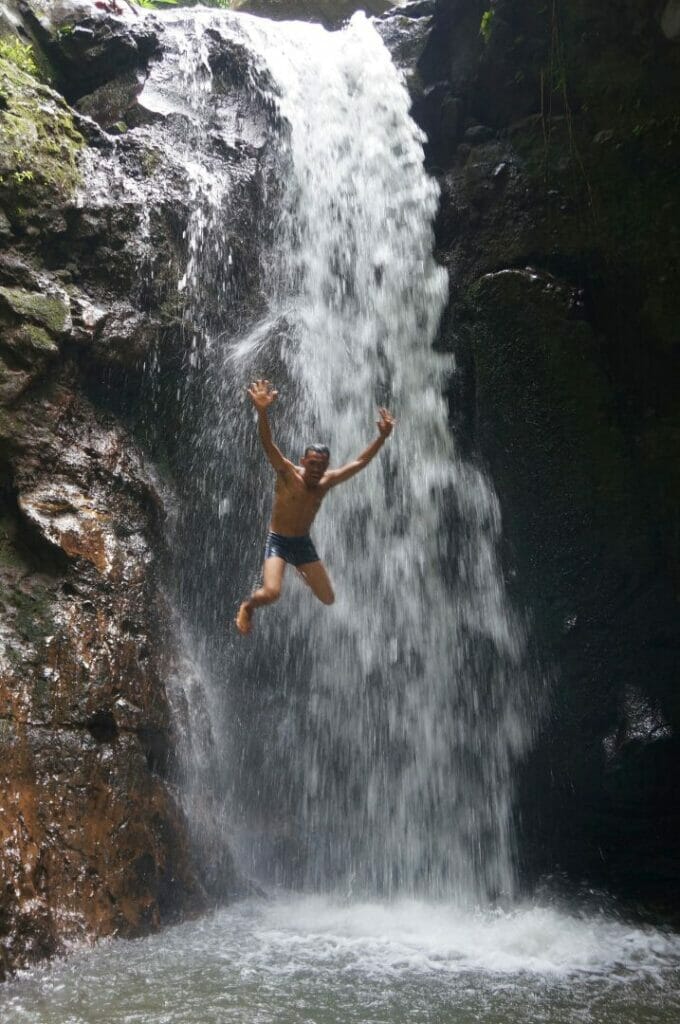
We spent an excellent day walking, bathing and tasting coconuts, cocoa, and other tasty fruits that grow in the surroundings. We will spend then the evening around a guitar to sing rock songs with friends of Mr. Paing. But despite the amazing atmosphere, we do not linger because the alarm clock rings the next day at 1 a.m. to start the night ascent of Kawah Ijen to admire its incredible blue flames.
The trek on the Kawah Ijen
The ascent of the volcano
Contrary to what you may read online, the climb to the crater rim is not at all difficult. It will take you about 1 hour and a half to climb the 3 km. Even if it is necessary to do it at night with the headlamp and it goes up sometimes a little steep, the way is wide and does not represent any difficulty. On the other hand, to go to admire at the bottom of the crater the famous blue fire of Ijen, visible only at night, is another matter…
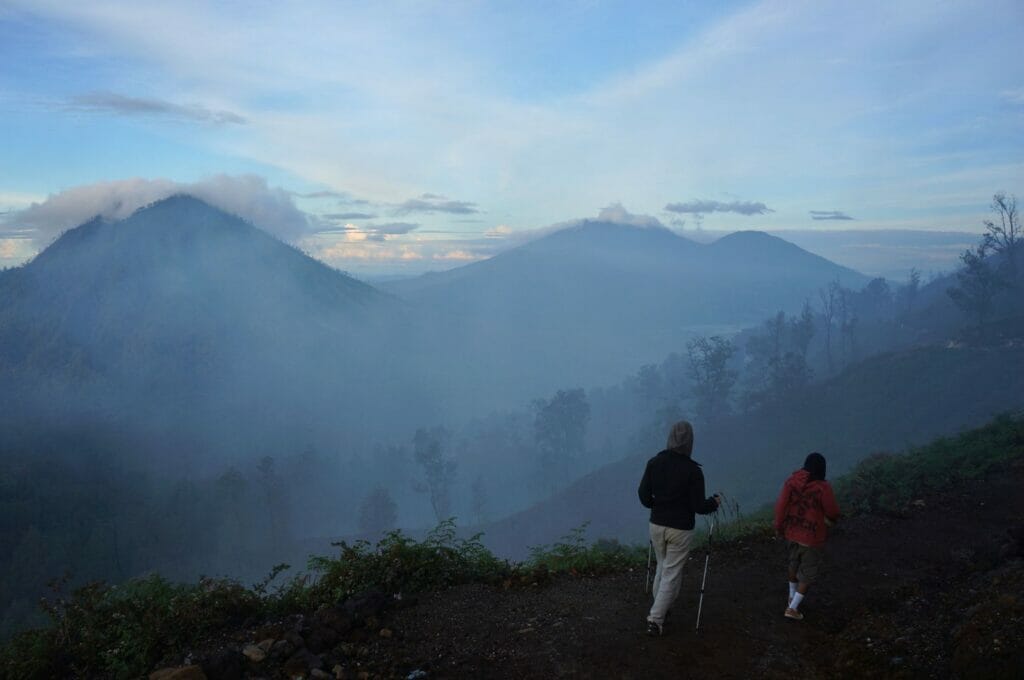
The descent in the crater of Ijen
Theoretically, going down into the crater is forbidden, there is a big sign on the crest. But nobody really respects it. If you climb without a guide, some porters will come and talk to you spontaneously to explain their work and their life while accompanying you down the crater.
As I said, the path to reach the bottom of the crater is not obvious, it is steep and slippery. Moreover, you will have to wear a gas mask because the sulfur fumes make the air unbreathable. Nevertheless, we met groups of tourists who simply went down covering their mouths with their clothes or a piece of wet cloth. If your guide suggests this solution, refuse to go down. These people simply could not breathe once at the bottom of the crater because of the toxic fumes.
But as Mr. Paing worked for 15 years as a sulfur carrier on the volcano, we didn’t risk much with him! He took Benoit to the bottom of the crater without taking any risk. For my part, I preferred to stay at the top because I was too bothered by the fumes. After having taken advantage of it, we went along the edge of the crater to admire the sunrise on the Ijen. I can assure you that we did not regret having risen so early!
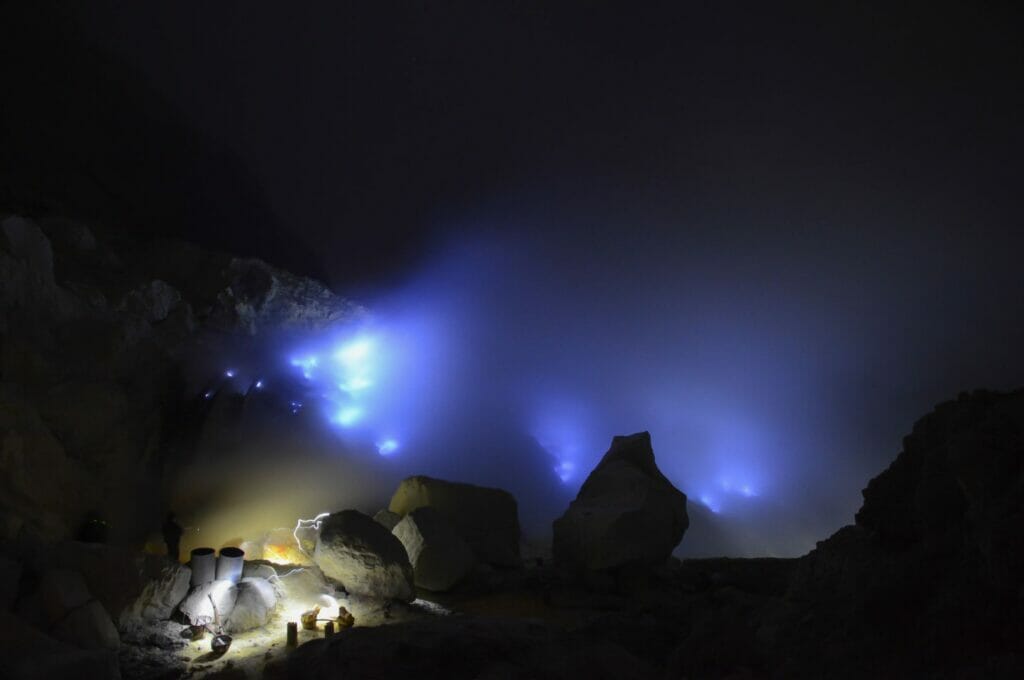
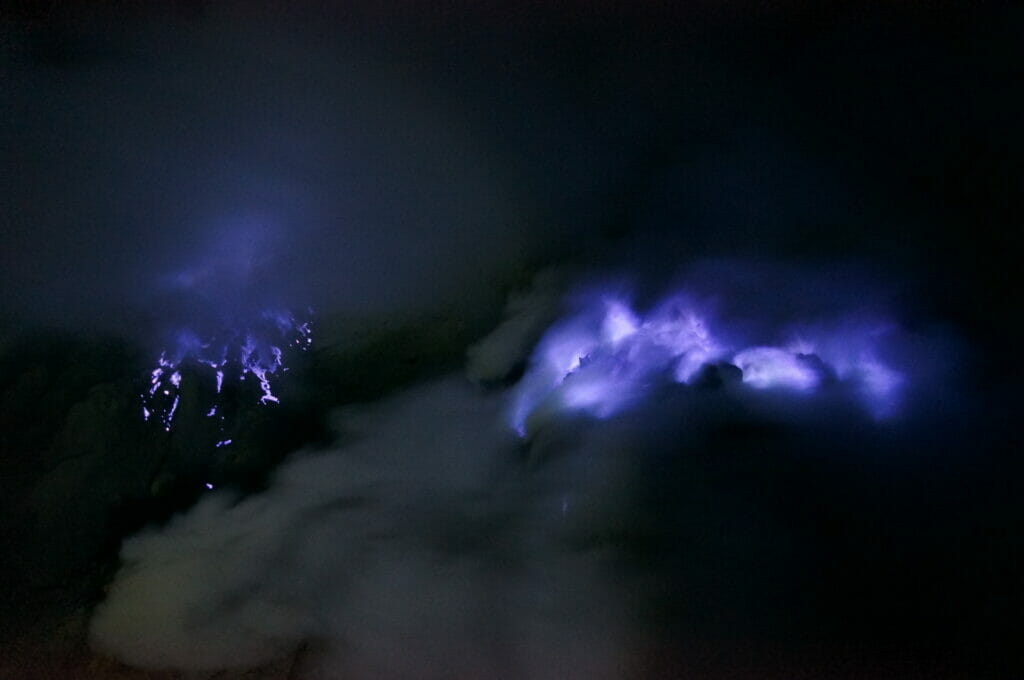
The Kawah Ijen trek in short
There is no major difficulty in the ascent of Kawah Ijen, it is more the descent into the crater that requires more attention. The trek is 11.6 km in total if you join the volcanic lake and follow the ridge. Count at least 4 hours to make the round trip. Download the map of the Ijen trek.
Sulfur miners in Kawah Ijen
A titanic job…
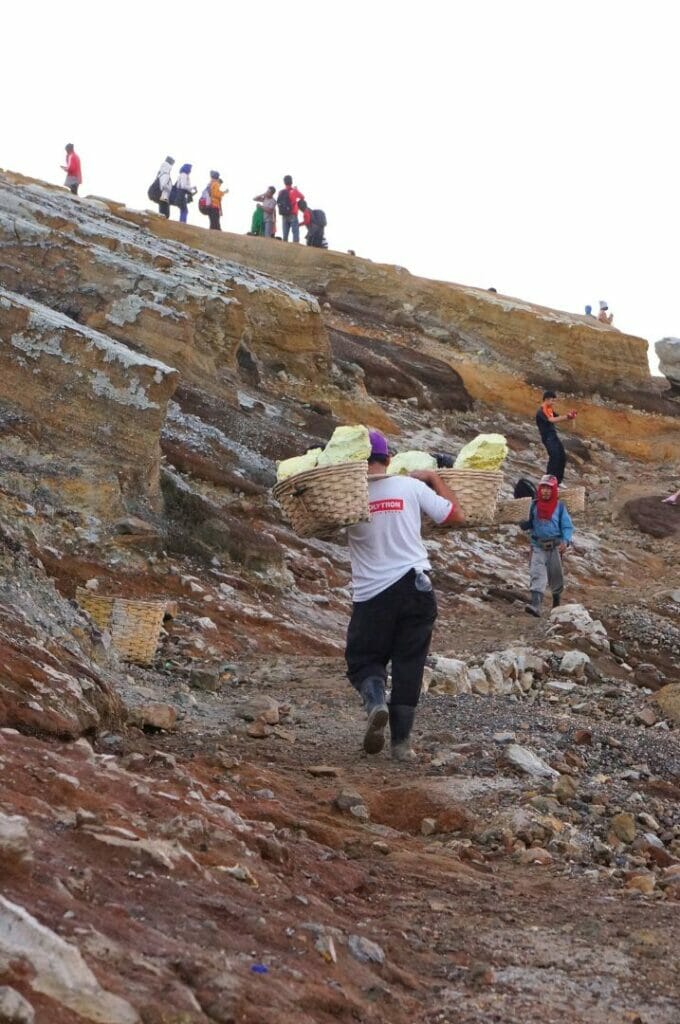
Even more impressive than the blue flames, if there was only one thing to remember about the Ijen volcano, it would be the heroic sulfur carriers. Once the liquid sulfur cools down, it crystallizes to form the characteristic yellow sulfur rock, used for the textile industry, fertilizers, and cosmetics… As you can imagine, it takes volunteers to go down to the bottom of the crater and bring up the solid sulfur.
During the ascent, we crossed some miners who took advantage of the coolness of the night to make their first trip. During the ascent, as they are not loaded, they climb the slopes of the Ijen like high-speed trains, we have been overtaken several times!
Then, once at the bottom of the crater, they break the sulfur into blocks with metal picks and load it into their wicker baskets, fixed on a wooden board. Where it gets impressive is the fact that they load between 70 and 100 kg of sulfur on their backs! They will have to carry all this first to the edge of the crater, then back down to the weigh hut, and on to the parking lot! It’s just crazy!
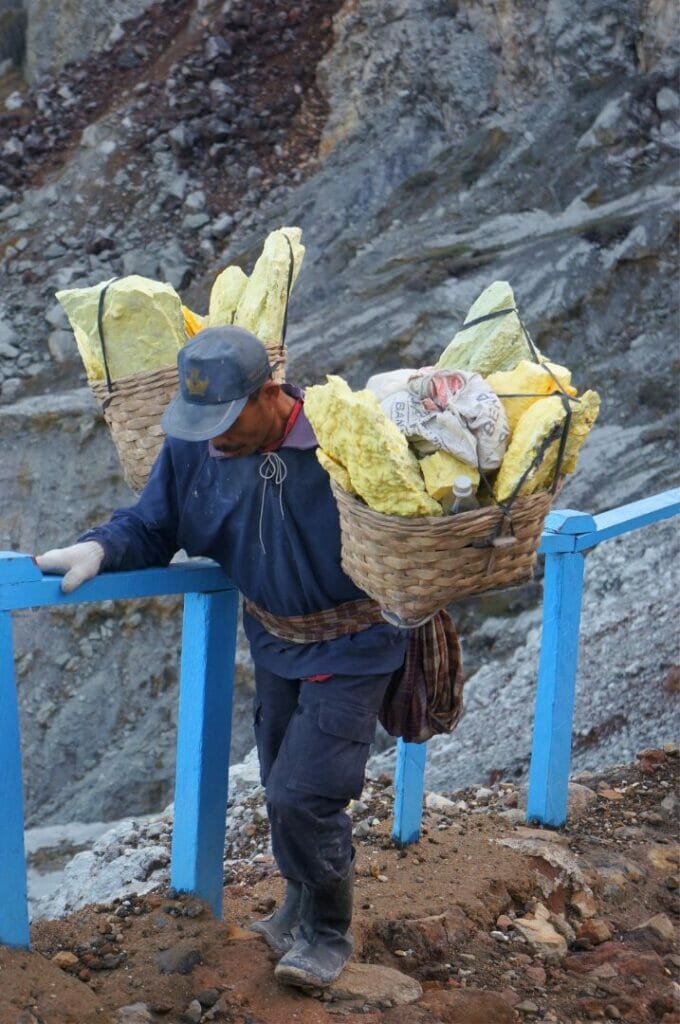
For a miserable salary
This hard work brings them very little money since they get less than 0.5 euros per kg! As most of the porters make 2 trips per day, they manage to earn between 7 and 10 euros per day. Which is still more than most people in Indonesia, you may notice.
But is it a fair reward for this work? I don’t think so… Especially since they ruin their health by carrying inhuman loads and breathing sulfur fumes every day. Most miners do not wear masks and just walk in flip-flops or boots! Their life expectancy is unfortunately reduced: around 40-45 years…
If you also visit the Ijen volcano, do your best not to disturb the work of the sulfur bearers and move aside to let them pass. Their task is hard enough as it is, so if on top of that they have to slalom between the tourists… So, if you decide to visit this volcano, respect the work of the miners. If you have some water or cookies, don’t hesitate to give them, they will be delighted!
Our review of the trek on the Kawah Ijen
So here is, as you will have noticed, we loved our visit to the volcano Ijen. We have to admit that it is quite exhilarating to be at the bottom of the crater of an active volcano and to admire these flows of blue flames! But this spectacle contrasts well with the hard work of the miners to earn their living…
We never get tired of discovering Indonesian volcanoes because they always have new surprises in store for us. By the way, we take you to Mount Bromo, always with Mr. Paing and his band!
And you, have you ever gone down the crater of an active volcano?
Pin it
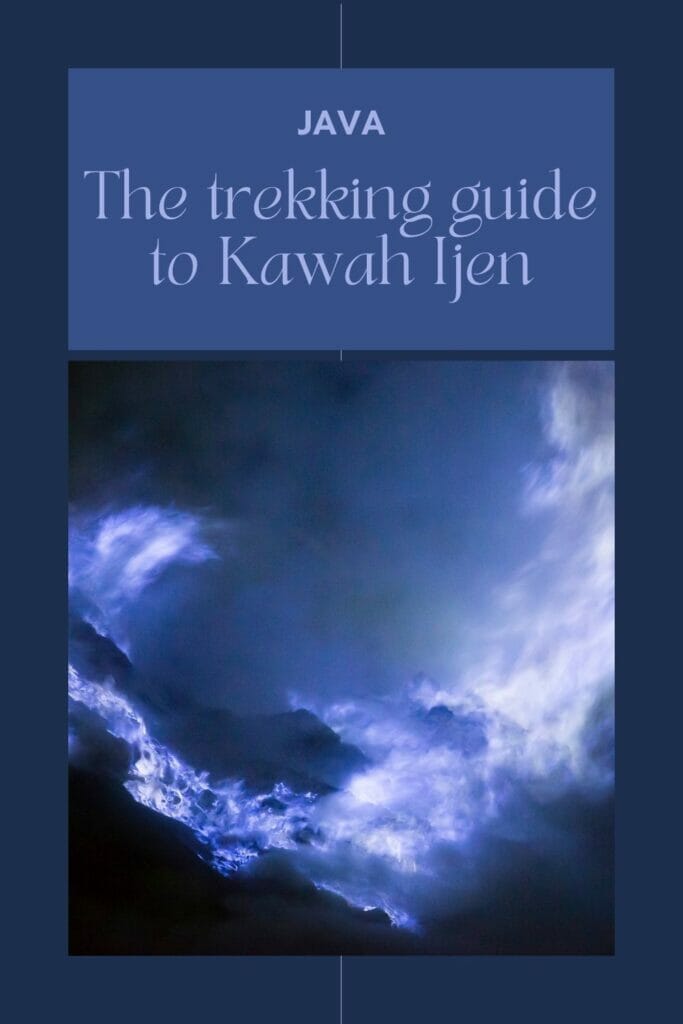
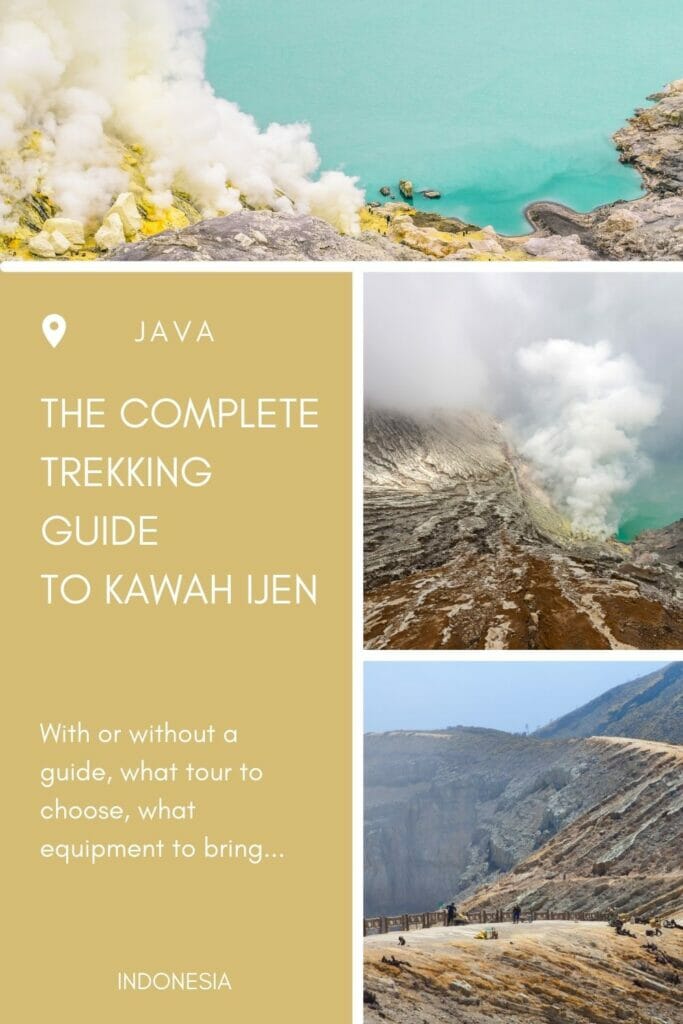
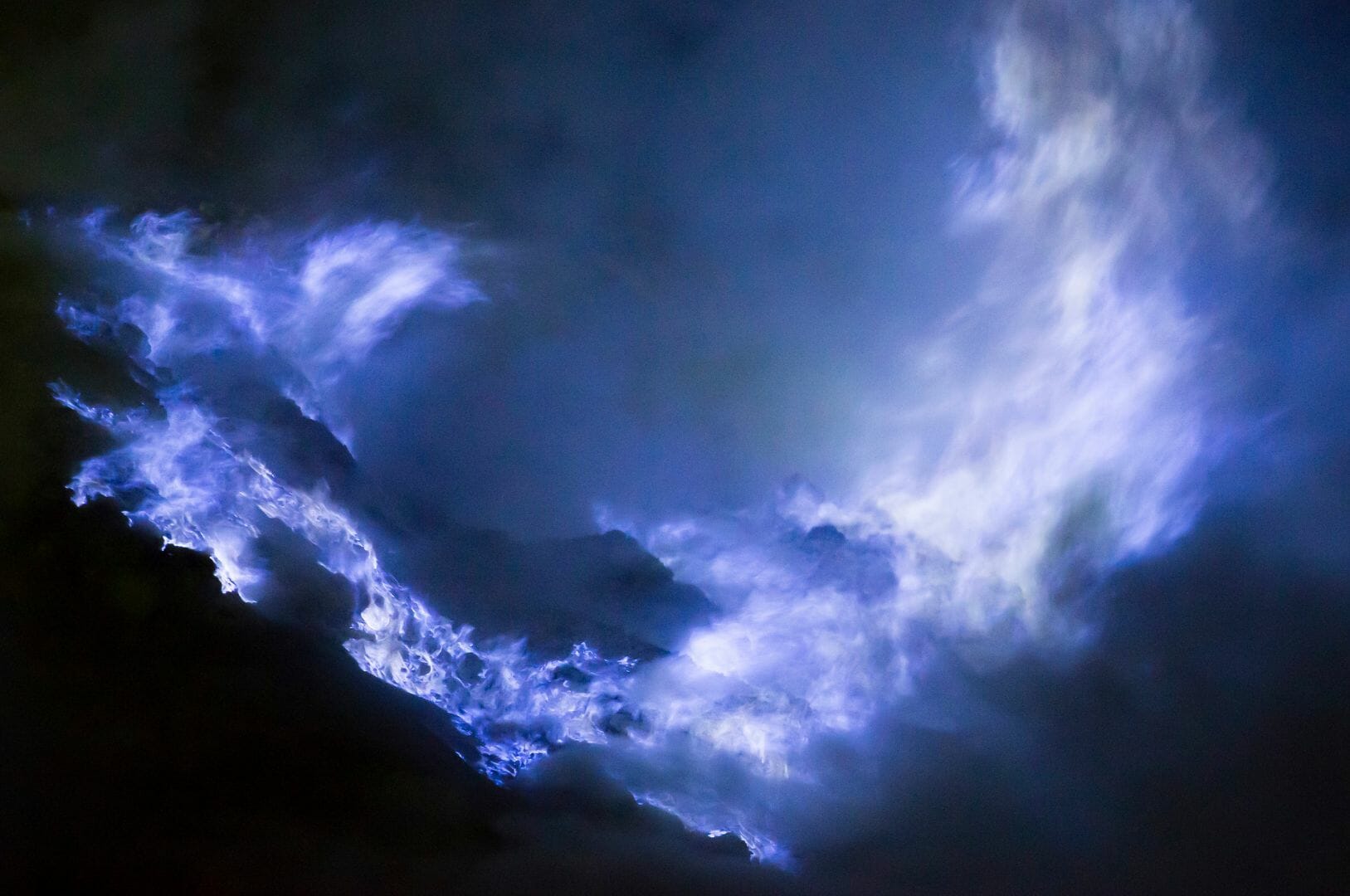
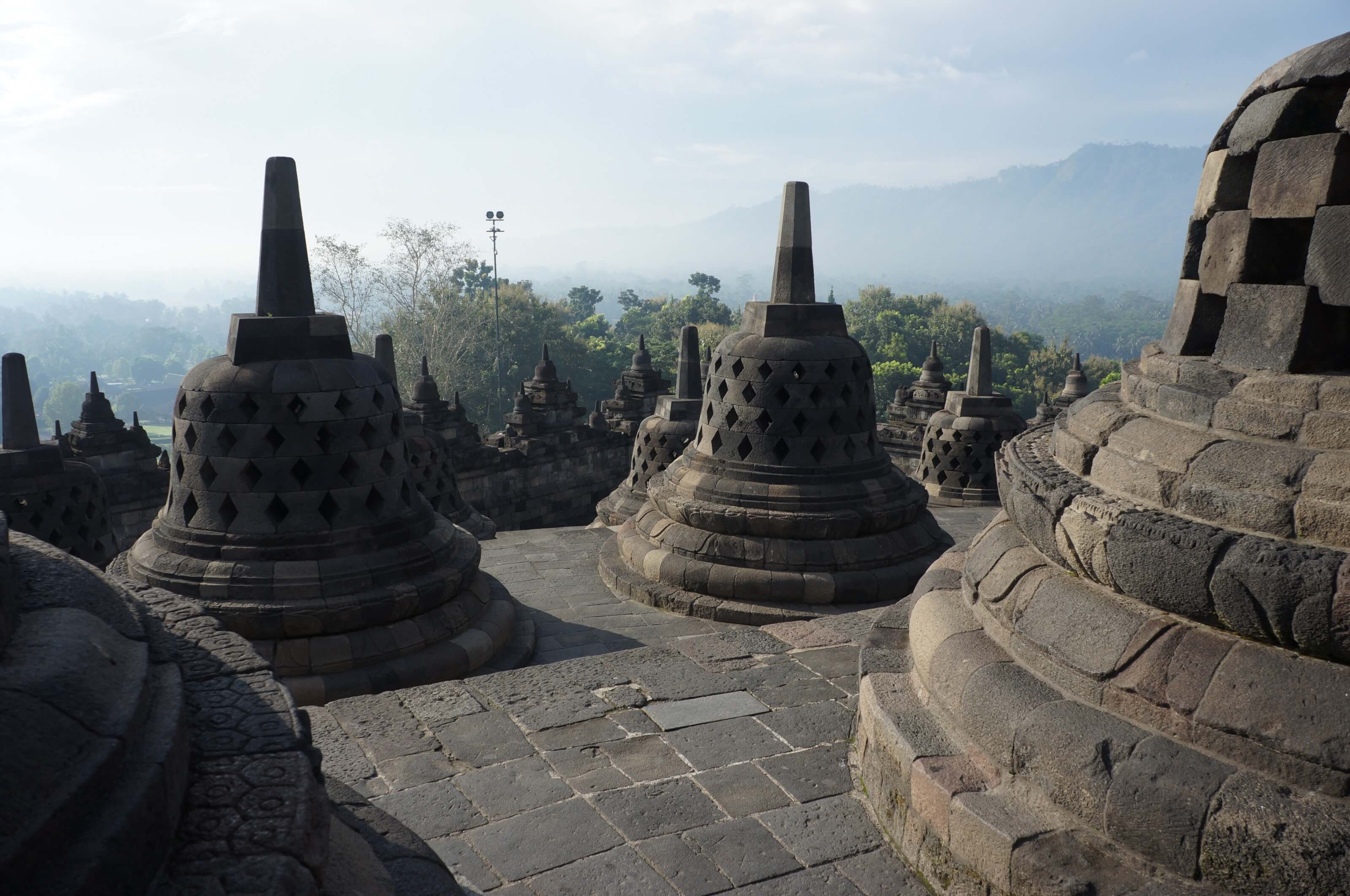
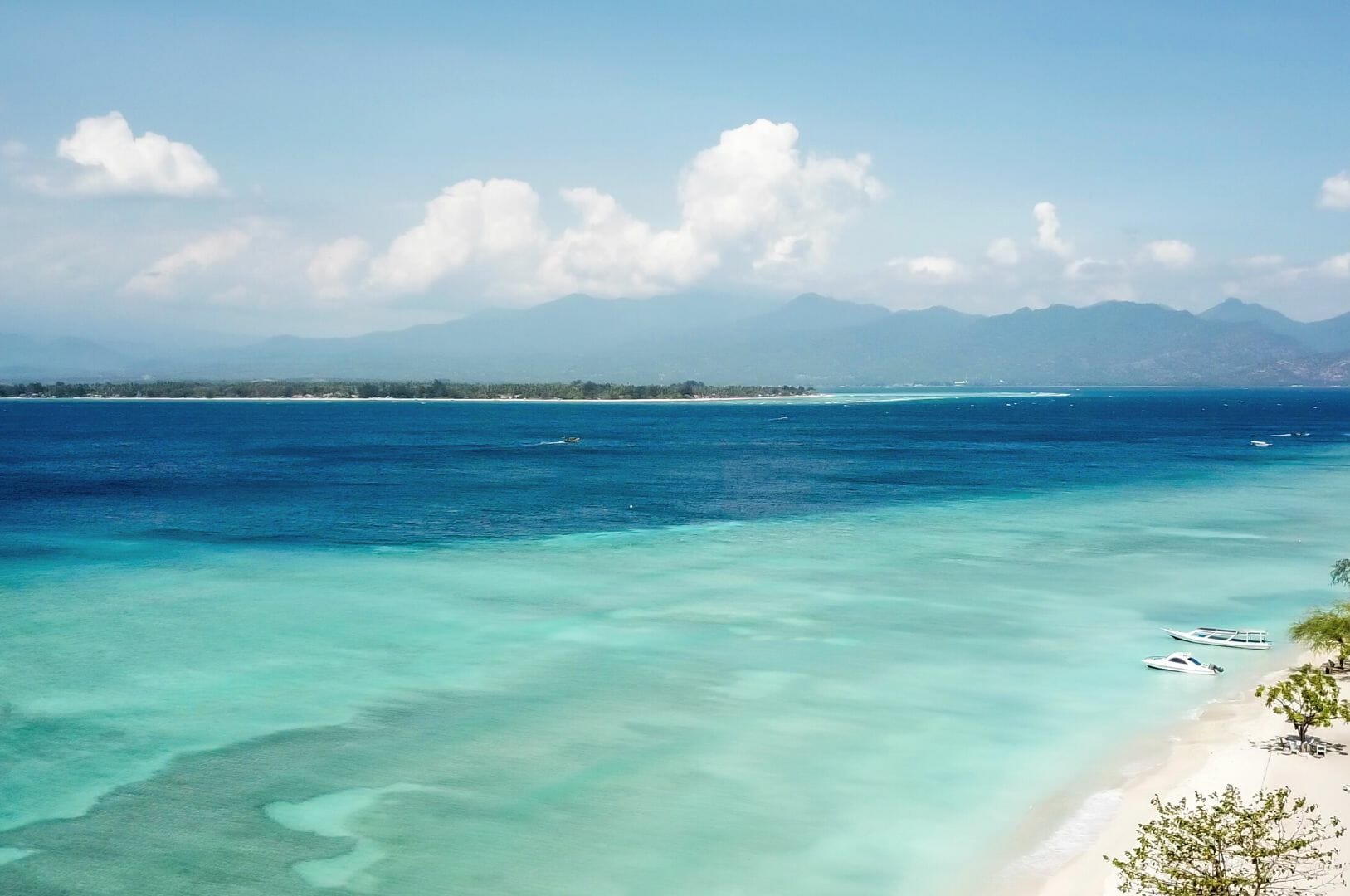

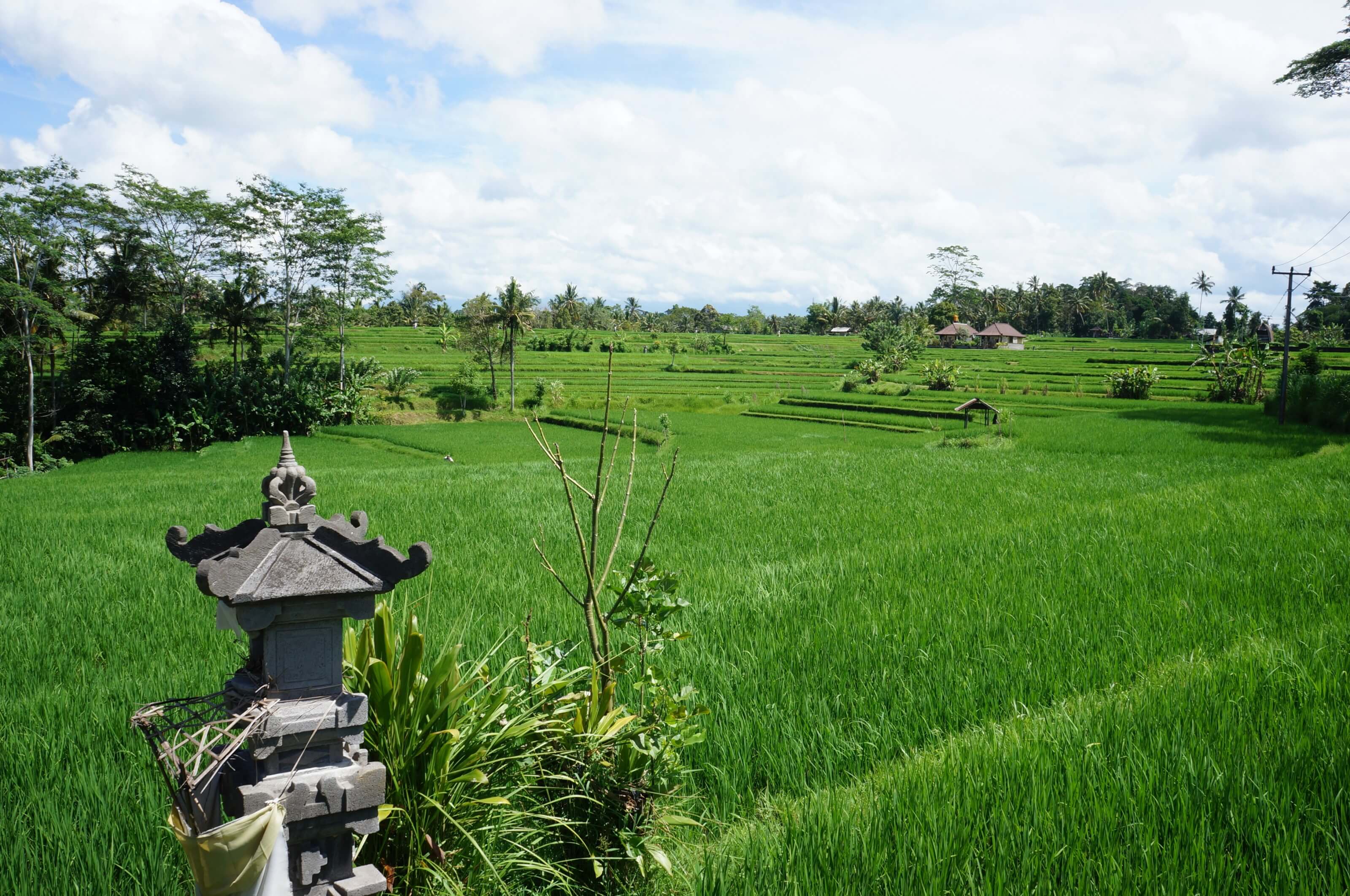
Wow, the blue fire phenomenon at Kawah Ijen is truly mesmerizing! It’s fascinating to learn about the volcanic gases that ignite and create those stunning blue flames. The combination of sulfur dioxide and hydrogen sulfide reacting with the air, along with the condensation of liquid sulfur, creates a spectacle that resembles flowing blue lava.
I can imagine how awe-inspiring it must be to witness these flames at night, reaching several meters high. The video captured by your guide, although apologies for the image quality, still showcases the unique and impressive nature of this phenomenon.
Thank you for sharing this incredible experience. It’s moments like these that remind us of the wonders of nature and the extraordinary beauty that can be found in unexpected places. Truly remarkable! 🔥💙